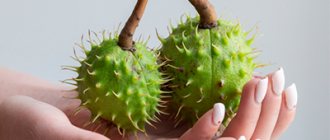The organs of the urinary and reproductive systems in men are closely interconnected, so their treatment is dealt with in a separate area of medical practice - urology. Pediatric urology deals with diseases of the genitourinary system in boys, and any disorders in this area should be addressed to a pediatric urologist. The features of the course of diseases of the urinary and reproductive systems in boys have some differences from adults, but most pathologies occur in all categories of patients.
In young patients, congenital malformations are more often diagnosed, which are easier and more easily amenable to surgical correction in childhood. In adults, acquired urological pathologies that arise under the influence of external factors or against the background of other diseases of the body dominate.
General information
The formation of smegma is a natural physiological process that is observed in all males of different ages.
Released constantly and especially intensely during puberty, smegma collects in the folds of the foreskin. Smegma formation in men increases sharply during the period of maximum sexual activity (at the age of 18-25 years), and in old age it is practically absent. Smegma is a mixture of a specific secretion secreted from the preputial glands located in the area of the corolla of the glans penis and dead epithelium of the glans mucosa. It has the characteristic appearance of a thick white fatty lubricant, and with its excessive accumulation - a mass of cheesy consistency of a whitish color, evenly distributed on the surface of the head. In adults with a sharp, specific odor. It collects under the foreskin and is partially evacuated during urination, after which it acquires a yellowish or greenish tint. Smegma acts as a lubricant that covers the glans and reduces friction of the foreskin against it (Fig. below).
The preputial glands to function at an early age, and the secretion during this period is produced in a relatively small volume. As the male body matures through puberty, the volume gradually increases. Regulation of the function of the preputial glands is carried out directly by the body and gradually the process of production and evacuation of smegma is balanced.
In adult men, the preputial space contains a small amount of fluid, including the secretion of the prostate, urethral glands and seminal vesicles, which facilitates the process of displacement of the preputial skin from the head of the penis , which facilitates frictional movements during sexual intercourse. While in young children, the inner layer of the foreskin is still tightly fused with the head and the preputial space as such is absent, which prevents the penetration of infection and the development of inflammation of the foreskin.
Sometimes there is an accumulation of smegma in young boys in the form of a dense/tumor-like formation, which greatly frightens parents. These are the so-called “smegmolites”, formed in children with increased secretory activity of the glands on the head and representing accumulations of hardened (calcified) smegma in the form of white plaques (photo below).
Smegmoliths in a child develop mainly against the background of incomplete opening of the head of the penis under the foreskin (physiological phimosis). Normally, smegma in boys, like all physiological secretions, does not contain pathogenic microflora and rarely becomes infected on its own, and urine is normally sterile. However, in the absence of the possibility of smegma exiting due to the narrowing of the foreskin, which prevents normal secretion, its accumulation forms a favorable environment for the proliferation of opportunistic/pathogenic microflora.
As sexual activity begins, changes are noted in the composition of the microflora of the glans penis and urethra, some of which belong to the so-called opportunistic microflora, which can create problems when the immune system is weakened (development of balanoposthitis ). And if a sexual partner has any sexually transmitted disease, infection with pathogenic microflora occurs.
Sometimes on some websites you can find the term “smegma in women,” which does not correspond to the concept of this physiological process, and various types of discharge in women are defined by different terminology.
General information and purpose of smegma
Smegma is a substance that is a mixture of dead epithelial cells with secretions of the sebaceous glands, and accumulates in the preputial sac. Additional components of smegma are:
- fats;
- mycobacteria, which easily absorb this component for their own growth and development;
- dead epithelial cells of the foreskin and head of the penis;
- antibacterial components;
- pheromones.
The fat-like substance allows the male reproductive organ to function normally. Her tasks include:
- ensuring unhindered sliding of the head;
- reducing the risk of microtraumas when exiting the foreskin cavity;
- preventing the development of infections due to the presence of beneficial flora.
Smegma has a whitish color and a specific tart odor. Its formation increases at the age when sexual activity reaches its peak, and practically stops in old age.
the formation of smegma in small volumes and easy excretion in the urine stream is considered normal and does not pose a threat to health. But sometimes, for various reasons, the amount of ligament can increase sharply, creating favorable conditions for the growth and reproduction of pathogenic microorganisms. Factors provoking this violation are considered:
- neglect to perform hygiene procedures in the intimate area;
- phimosis – narrowing of the external opening of the foreskin;
- genitourinary infections.
The accumulation of smegma, combining with salts, acquires a dense consistency. Such formations are called smegmolites. They gradually harden and settle in the preputial sac. But even without the presence of crystals, the substance, stagnating, loses its bactericidal properties and becomes the cause of the development of various infections in the body. The most common are:
- balanitis - inflammation of the head of the genital organ;
- postitis is a pathological process affecting the foreskin;
- Balanoposthitis is a combination of the two above diseases.
Attention! In rare cases, against the background of reduced immunity, oncological processes may develop that affect the tissues of the penis
Symptoms
Smegma in men has the characteristic appearance of an evenly distributed coating on the surface of the head of the penis, a whitish color/curdled consistency, which has a specific odor. Its excessive accumulation is easily determined visually (photo below).
There are no symptoms (burning, itching, pain during urination, swelling/hyperemia of the head of the penis, disruption of the integrity of the epithelium of the mucous membrane, erythema). However, when smegma becomes infected (activation of opportunistic microflora), the quantity, nature, and in some cases the texture of the discharge may change. The addition of a fungal/bacterial infection manifests itself with appropriate symptoms.
Smegma in men
In adults, the secretion of the glands of the penis has a typical appearance of an oily whitish substance or a white coating.
It consists not only of the secretion of glands, but also of the epithelium of the penis. Due to the fact that it is an excellent breeding ground for bacteria that feed on the fatty acids it contains, the unpleasant odor of this secretion is formed.
With normal health and personal hygiene, smegma will not cause any discomfort. However, with pathological processes associated with its infection, pain, itching and swelling of the head of the penis often develop.
Next you can see what smegma looks like in men (photo attached).
How to get rid of it
In accordance with the unpleasantness of the accumulating substance, both visually and taking into account its specific odor, a reasonable question arises - “how to get rid of smegma in men.” It is impossible to completely stop the production of this secretion, so the only thing that can help combat it is careful adherence to intimate hygiene every day.
And if abundant formations accumulate, how to get rid of them? The answer will be similar to the previous one, only taking into account the fact that, most likely, the frequency of visiting the bathroom will need to be increased.
In situations where smegma becomes inflamed, treatment is prescribed by a doctor, often in the form of the use of antiseptic solutions. If the situation is complex, then antibiotics in tablet form or local ones in the form of ointments can also be used.
Self-medication is under no circumstances allowed. Only a specialist will be able to determine what is happening in a man’s body and which drug is suitable for him.
Tests and diagnostics
If there is excessive accumulation of smegma, no tests are performed. However, in some cases, for the differential diagnosis of a physiological process with a number of diseases ( candidiasis , chlamydia , mycoplasmosis , genital herpes, etc.), especially with the appearance of cheesy discharge, a strong unpleasant odor, itching, hyperemia/swelling of the head of the penis, the appearance of erythema, appropriate laboratory tests are prescribed research.
Composition, appearance
Smegma is a light-colored substance. Its content is the secretion of the sebaceous glands located inside the penis, the remains of epithelial tissue. Their increased work leads to its excessive formation. It appears inside the prepuce and lands on the head of the penis. With insufficient hygiene, microorganisms can breed in accumulations of smegma:
- Cause inflammation (balanitis, balanoposthitis).
- The appearance of papillomas on the penis.
- Oncological neoplasms on the penis.
Smegma has a tart odor and contains stimulating substances (pheromones) and bactericides. Acts as a lubricant for the head of the penis when the foreskin exposes the penis during erection.
It begins to be produced in infancy, especially in adolescence, when the body undergoes hormonal changes and a boy becomes a man. This is a normal phenomenon, everything will be established by the age of 30.
We advise you to study - Do hormonal imbalances occur in men, how to restore balance
There is an unpleasant smell
- In case of disruptions in the hormonal system.
- Diabetes mellitus.
- Some diseases cause intense discharge.
If an unpleasant odor occurs, you need to get tested to determine its cause. This is a symptom of some disease. Can cause severe inflammation of the genitourinary system, sexual dysfunction (decreased libido, premature ejaculation).
Accumulation of smegma in men
It is a necessary component of the sexual organ; it is needed so as not to injure the head of the penis when moving the prepuce during an erection. Large accumulation leads to inflammatory processes.
Balanoposthitis may occur. With it, the head of the penis turns red, the foreskin swells, small wounds appear, they are very painful. Excess smegma can lead to the appearance of papillomas on the penis - papillomamatosis, oncological tumors.
Therefore, it is very important to wash it off daily. This must be done efficiently with detergents, opening the head well
What can smegma be confused with?
White coating on the genitals, candidiasis may appear, the following signs will appear:
- Unpleasant smell of white coating on the penis.
- Pinching, itching when urine flows out.
- Decreased immunity.
- The appearance of focal inflammation on the head.
It is impossible to independently distinguish the disease from the accumulation of smegma. You should take a blood test to identify the disease. The earlier the diagnosis is made and therapy prescribed, the less likely there are complications.
How to treat
First of all, you need to find out if there is an infection in the clusters
If the appearance of white plaque in the folds of the prepuce or on the head of the penis is associated with the formation of smegma, then you should pay attention to hygiene procedures:
- Every day, sometimes after each urination, wash the head of the penis with warm water and soap.
- Disinfection of the penis with a weak solution of potassium permanganate.
- Lubricate with tetracycline ointment before going to bed.
Genital hygiene is of great importance for men. In countries where this is not given due attention, a large percentage of diseases of the reproductive system are cancer, papillomavirus, balanoposthitis. Cleanliness of the body is the key to health. Visit our website. Interesting information awaits you.
Prevention
Preventive measures include:
- Carrying out regular hygiene procedures for the child and teaching older boys how to perform independent hygiene procedures.
- In children with pronounced narrowing of the preputial sac ring, monitoring its condition at least 2 times a year is required to prevent the development of pathological changes.
- For adult men, regularly performed intimate hygiene.
- If phimosis is present, eliminate it.
Treatment in children and adolescents
Children experience accumulation of smegma mainly due to phimosis. It is the narrowing of the foreskin that interferes with the normal secretion. In this case, the discharge cannot be carried out normally by the urine stream. Over time, if smegma is not removed from the child’s genital organ, there is a high probability of developing inflammatory diseases of an infectious nature. The main cause of smegmoliths in boys is phimosis. Therefore, its elimination is the first strategic step towards recovery:
- Treatment of phimosis and possible abnormalities in the development of the head of the penis. For corrective purposes, the doctor may prescribe baths and steaming. However, the surest way to eliminate the disease is still surgical intervention. In this case, during the operation, the doctor circumcises the foreskin, which helps free the head of the penis.
- Among the necessary procedures that will help get rid of the problem is treating the painful area with antiseptic agents. It runs until the problem goes away.
- Regular water procedures are necessary. If the age is appropriate, the boy should be told how to care for the genital area.
List of sources
- Nesvetov A.L., Shabad A.L. Histological structure of the inner layer of the foreskin and the origin of smegma. // Urology. 1964. - No. 2. - With. 33-34.
- Staroverov O.V. Prepucioplasty in the treatment of phimosis in children. Russian Bulletin of Pediatric Surgery, Anesthesiology and Reanimatology. 2012; 2 (2): 27-31.
- Staroverov O.V. You have a boy. M.: Publishing House "V. Ema", 2007: 183.
- Tarusin D.I. Risk factors for reproductive disorders in boys and adolescents: Author's abstract. diss. doc. honey. Sci. M., 2005.
- Pulatov A.T. About phimosis, long foreskin syndrome and circumcision. Mater. Scientific pract. conf. - Dushanbe. - 1994. - pp. 42-44.
Substance Elimination
Doctors recommend regularly washing off smegma in children under running water. This way, the risk of problems arising as you grow older is reduced to zero. To do this, you can limit yourself to baby soap, which has a gentle effect on the organ, but produces a disinfectant effect. When maintaining children's hygiene, you need to use diapers and wipes without adding alcohol. You can use special powders to eliminate moisture.
Washing under running water
We advise you to study - What you need to know about restoring potency after a stroke?
There is no point in trying to open the foreskin or increase its mobility. Doing so will cause pain, possible bleeding and damage to the skin. If you have phimosis or smegmolitis on the head of the penis, you should not self-medicate, but immediately consult a doctor.
Smegma is treated as follows:
- Treatment of pathological development of the head. Sometimes steaming and baths are enough, but in most cases the foreskin must be removed. Circumcision is performed surgically. After the operation, for some time it is necessary to wash the child’s genitals after each urination.
- Use of medicinal solutions. If the inflammatory process has begun, ordinary rinsing is not enough. The doctor prescribes daily use of antiseptic solutions until complete recovery. Often, 10 ml of Levomekol ointment is injected into the opening of the foreskin with a syringe without a needle, washing the problem area. This way you can wash away everything that has accumulated on the head and under the foreskin. At night, apply a compress from the same ointment. If necessary, add 2-3 drops of pure sea buckthorn, olive oil, Vaseline or oil vitamin solutions. Baths with Furacilin or Ectericide may be prescribed.
It is very important from childhood to instill in growing men the observance of the rules of hygiene of the reproductive system. Very often, an exacerbation of the problem is observed in adolescents during puberty, when the rules of penis care are neglected
Adult men who experience heavy discharge often ask how to remove smegma. Unlike children, treatment will be carried out differently.
First, the man is prescribed rinses with antiseptic solutions. If the inflammation does not go away, antibiotic treatment is used. They can be available in the form of tablets or ointments. The prescription is carried out by the attending physician, since self-medication can lead to complications and decreased reproductive function.
Before prescribing a course of treatment, the doctor establishes an accurate diagnosis of the disease. This is done in order to exclude the possibility of a sexually transmitted infection. Men with an active sex life should be attentive to any changes in their well-being.
Smegma, like other natural secretions of the male body, must be removed. Its accumulation causes irritation of delicate skin, causing inflammatory processes. Regular hygiene will help prevent inflammatory processes under the foreskin and on the head of the penis. If in this case the problem persists, you need to contact a specialist.
Caring for the health of the genital organ should begin in childhood and continue throughout adult life.
If the smegma is gone
The absence of smegma causes discomfort: the head dries out, the foreskin may stick to it, and painful sensations arise. In young and middle-aged men, lubrication may disappear for the following reasons:
- Infectious diseases caused by ureaplasma, mycoplasma. Lack of lubrication is accompanied by decreased libido and nagging pain in the groin. As they heal, the symptoms disappear, and the secretion of smegma resumes.
- A course of taking certain medications.
- Hormonal imbalance, in which the functioning of various groups of glands is disrupted.
- Treatment of the head with hormonal drying ointments such as “Lorinden S”, frequent rinsing with chlorhexidine.
The ointment has antimicrobial, antipruritic, antiallergic and anti-inflammatory effects.
Price in pharmacies from 400 rubles. If there is no smegma, you need to consult a urologist. If there are no pathologies in his part, then see an endocrinologist who will find out the cause of gland dysfunction.
An example of a doctor’s answer from the forum https://03uro.ru/consultations/question/132162:
When to see a doctor
The accumulation of smegma in a child (a photo of the pathological process allows parents to understand how serious the problem can be) is an unpleasant situation, given that the phenomenon provokes pain when urinating.
You should consult a doctor when the first warning signs appear, these are:
- redness of the foreskin and glans penis;
- formation of hard formations in the preputial sac (hardened accumulation of smegma);
- the child feels pain when going to the toilet;
- causeless moodiness and crying;
- burning and itching of the genital organ;
- increased body temperature (in serious forms of pathology).
The primary examination is carried out by a children's doctor (pediatrician). If necessary, based on the diagnostic results, the pediatrician determines the need for consultation with other highly specialized specialists (nephrologist, endocrinologist, urologist, dermatologist).










